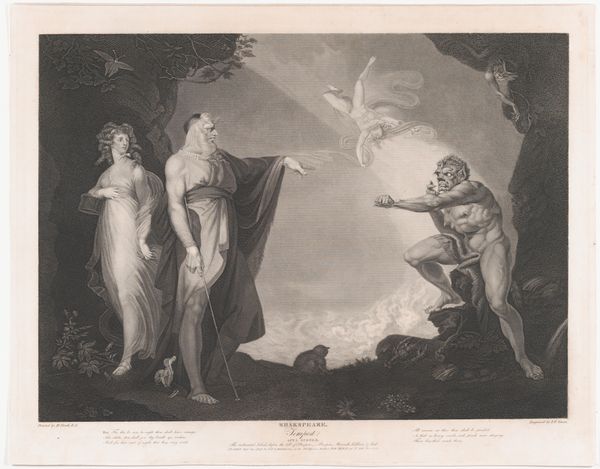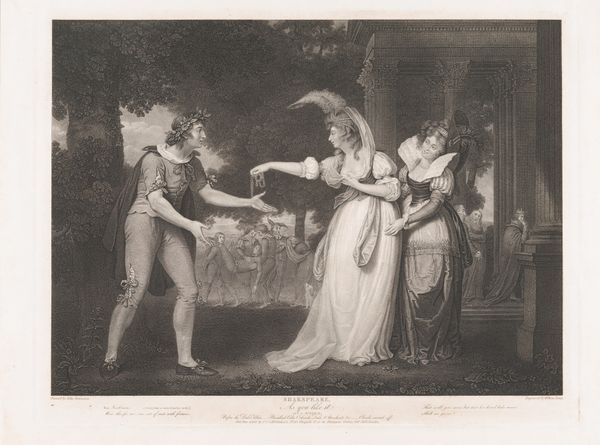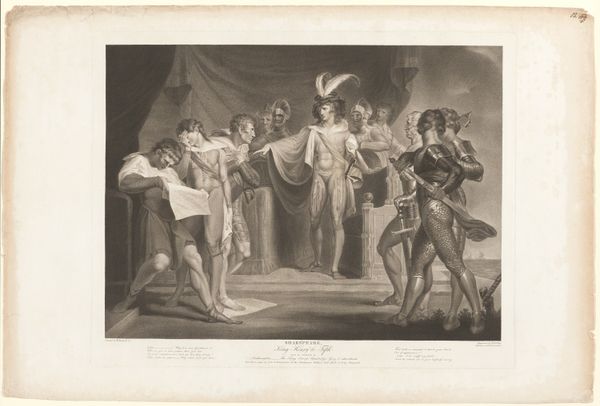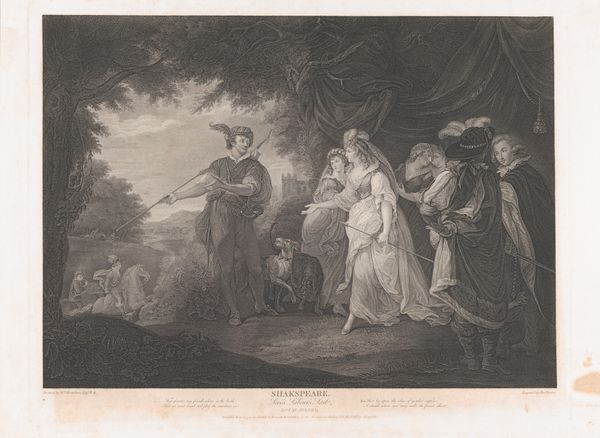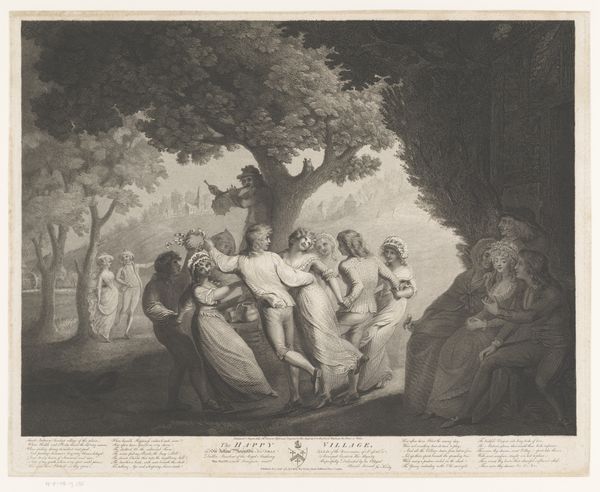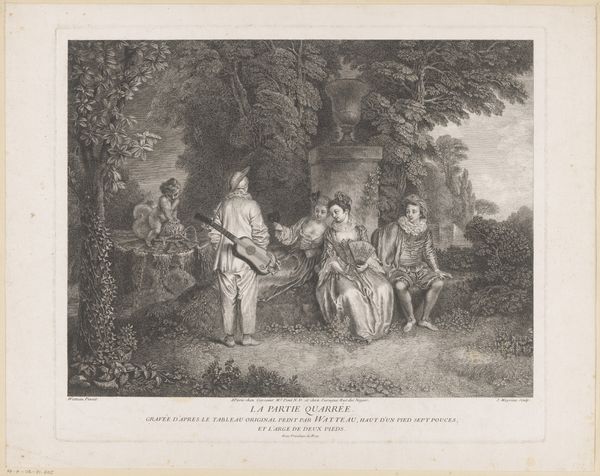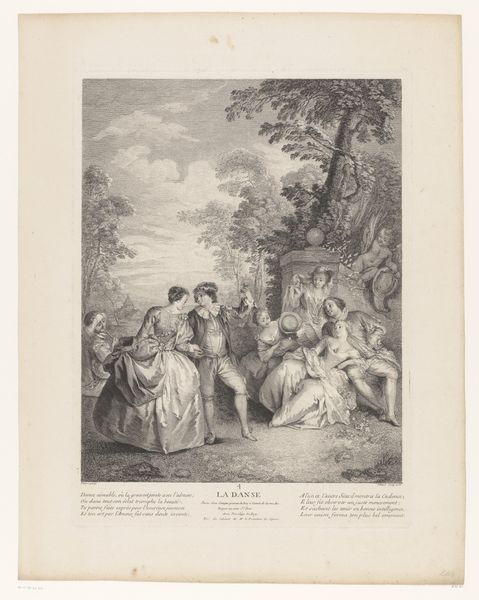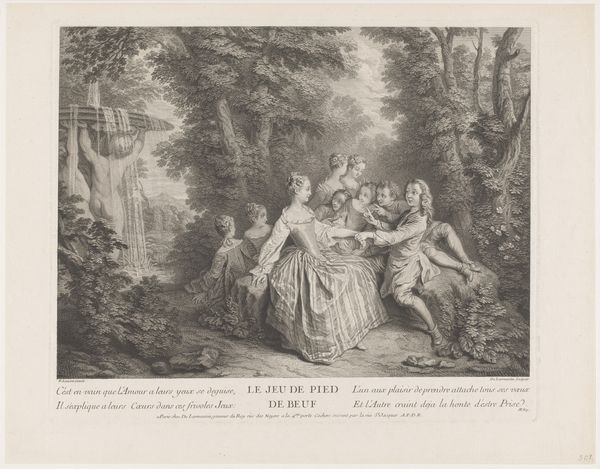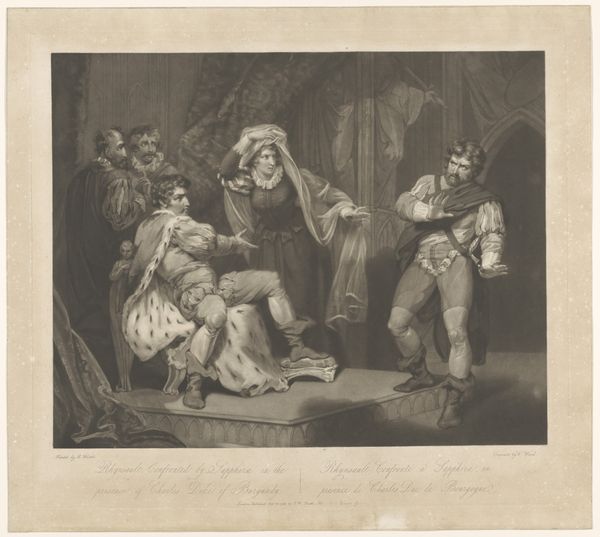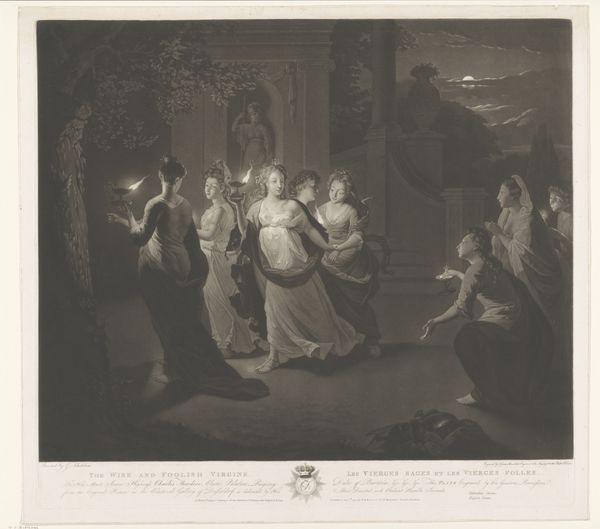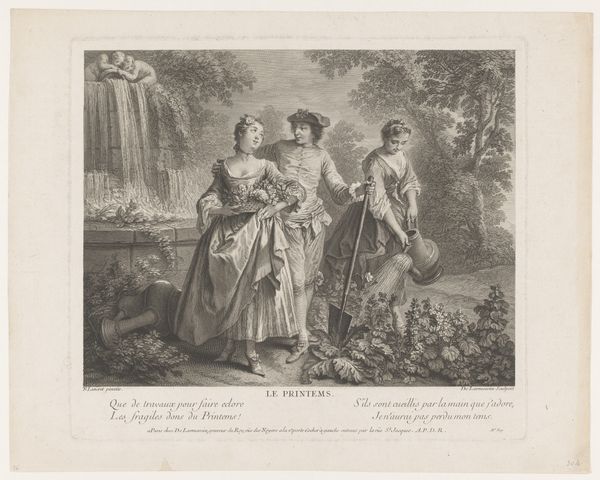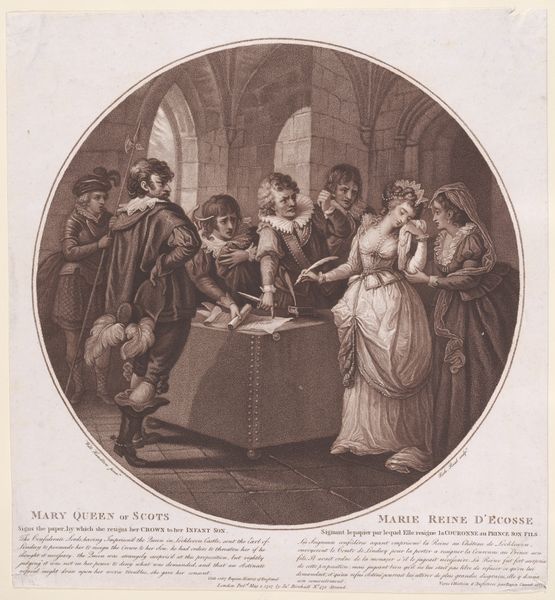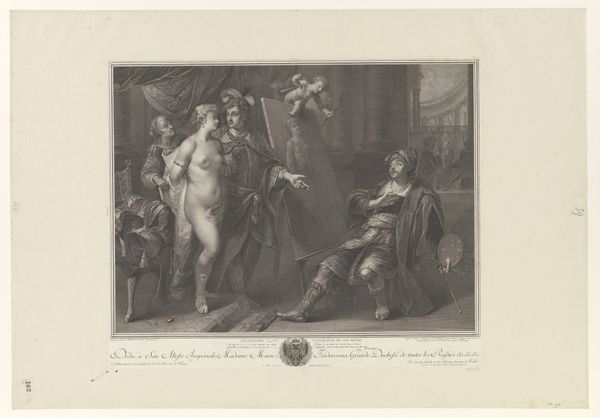
Picking of the Red and White Roses (Shakespeare, King Henry the Sixth, Part 1, Act 2, Scene 4) 1795 - 1852
0:00
0:00
drawing, print, engraving
#
drawing
# print
#
figuration
#
romanticism
#
history-painting
#
engraving
Dimensions: Plate: 19 9/16 × 25 in. (49.7 × 63.5 cm) Sheet: 21 7/8 × 27 15/16 in. (55.5 × 71 cm)
Copyright: Public Domain
Curator: This engraving presents a dramatic scene titled "Picking of the Red and White Roses," based on Shakespeare's King Henry VI, Part 1. While the artist's name is given as John Ogborne, it's more likely that this work, from around 1795-1852, reproduced the work of another artist, and was itself produced by the engraver Robert Thew. The location of this particular print is the Metropolitan Museum of Art in New York City. What strikes you initially? Editor: There's a definite sense of unease. The composition feels theatrical, almost staged. It’s stark—not just in its black and white rendering, but in the tension it conveys despite the garden setting. The light seems to highlight the figures in such a way that it reveals the underlying conflict, but they're out in broad daylight... so it's a public performance. Curator: Indeed, it encapsulates the moment when the Houses of Lancaster and York declare their allegiances, foreshadowing the Wars of the Roses. Notice the roses themselves, picked deliberately, each carrying the weight of factional identity and allegiance. The red, associated with Lancaster, the white, for York. These blooms transform into symbols of deep historical division, imbued with intense cultural weight and collective trauma to this day. Editor: That choice, a simple rose, made to carry the future of England's monarchy! It underscores how even the most seemingly innocent objects become entangled in political struggles, amplified through social history and collective consciousness. One small gesture can create chaos. And to think how frequently the rose has served as a token of peace or romance. How readily a sign may be co-opted and reversed. Curator: Precisely. The act of choosing sides is externalized as an action against nature; they're literally plucking roses to symbolize tearing apart the fabric of their kingdom. Also, note the style; it embodies the Romantic sensibility popular at that time, that invested human drama within sweeping historical narratives. Editor: And isn’t it intriguing how a staged drama can later influence or at least symbolize genuine historical clashes? This play surely played a crucial role in framing England's perception of its Wars of the Roses. Curator: Absolutely. The play gave tangible symbols, and those images have staying power; this visual work echoes and extends the narrative’s grasp across time and public imagination. A visual representation of cultural memory at work. Editor: Examining the engraving has underscored how narratives, both fictional and historical, are molded and propagated, influencing collective identity and memory through carefully deployed imagery. Thanks for highlighting that, especially about the roses. Curator: My pleasure; exploring this image has offered us insight into how art continues to resonate and influence the understanding of monumental historical narratives.
Comments
No comments
Be the first to comment and join the conversation on the ultimate creative platform.

